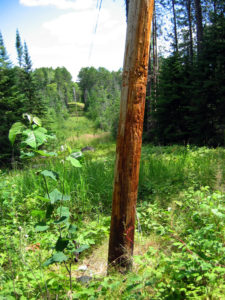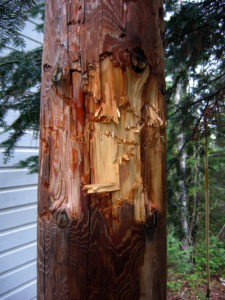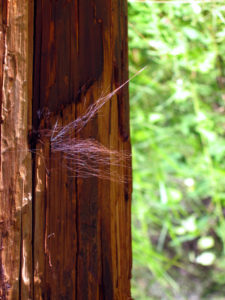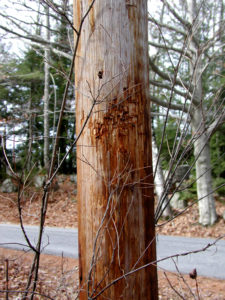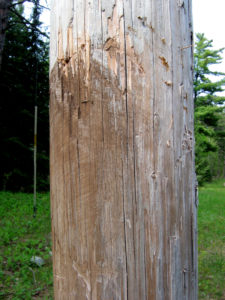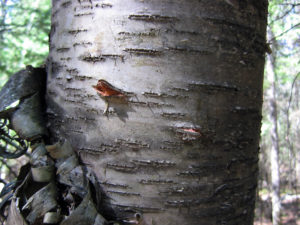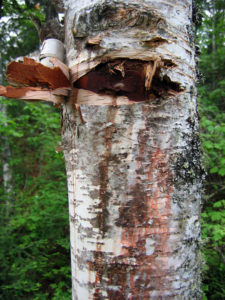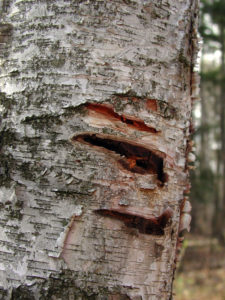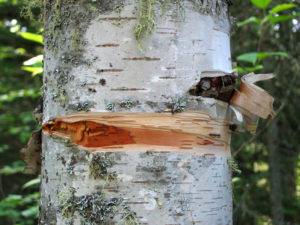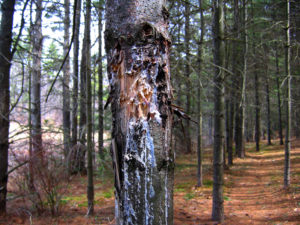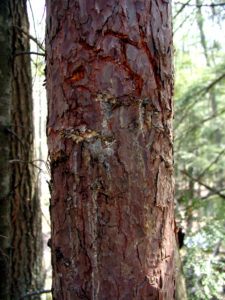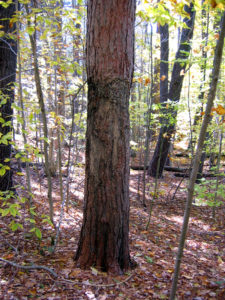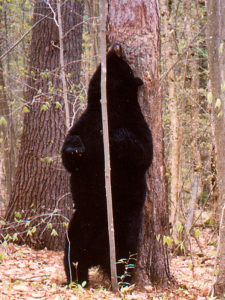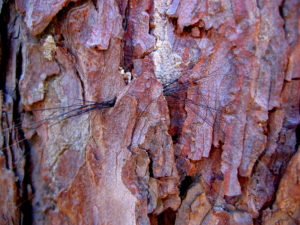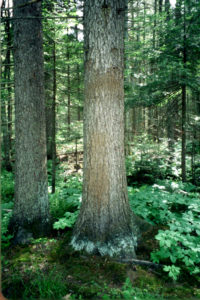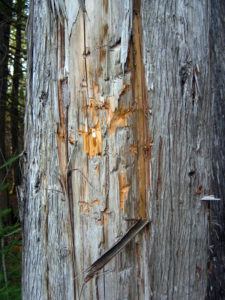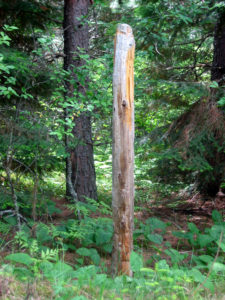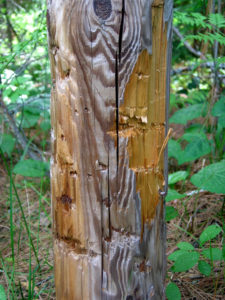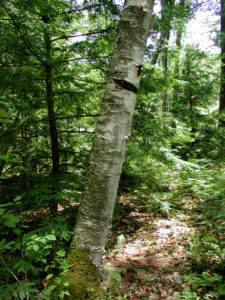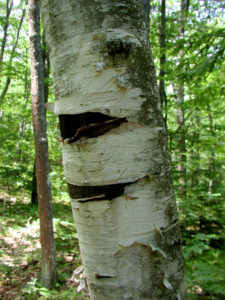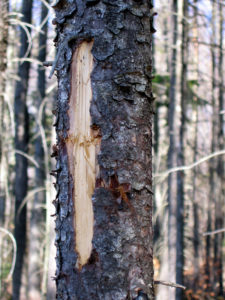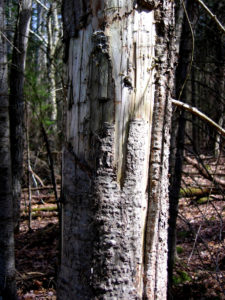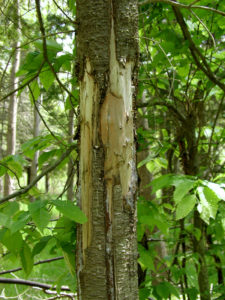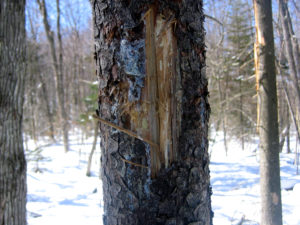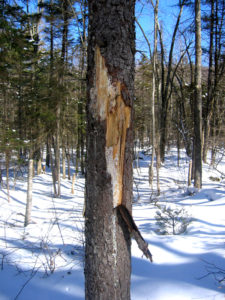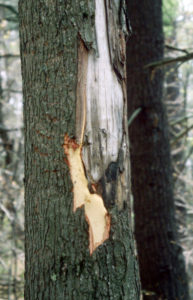Marking Trees and Poles
Black bears of all ages and both sexes rub their scent on marking trees, including wooden sign posts and utility poles, but the majority of this marking is by mature males during the mating season (May and June in Minnesota). They rub their shoulders, neck and crown and may also claw and bite the tree. Claw marks are usually superficial, but incisor bites are deep enough that pieces of bark and wood are sometimes pulled out. Bites leave nearly horizontal marks that look like a dot and a dash where the upper and lower canine teeth came together.
Marking trees are generally along trails. Favorite trees have little ground vegetation to prevent a bear from approaching them, and they often lean slightly toward the trail. Look for hair caught in the bark or wood 2 to 5 feet high and look for bites 5½ to 6½ feet high.
The hair often bleaches to brown or blond after a few months but can still be distinguished as bear hair from its length and appearance. Guard hairs are typically coarse and 3-4 inches long and have a narrow base that may be wavy. Bears are shedding their winter fur when much of the marking is done in spring or early summer, so the bark may also catch underfur, which is thin, wavy and shorter.
Utility poles are favorite marking ‘trees.’ These are typically in ideal locations along travel corridors, but preservatives might be a factor, too. An easy way to tell if bears live in an area is to check the utility poles, especially those on upland ridges where bears are likely to cross a road. Bite marks on utility poles are generally at the same height as on trees, but bears sometimes bite low on poles.
Bear-marked Trees and Poles:
 |
 |
 |








